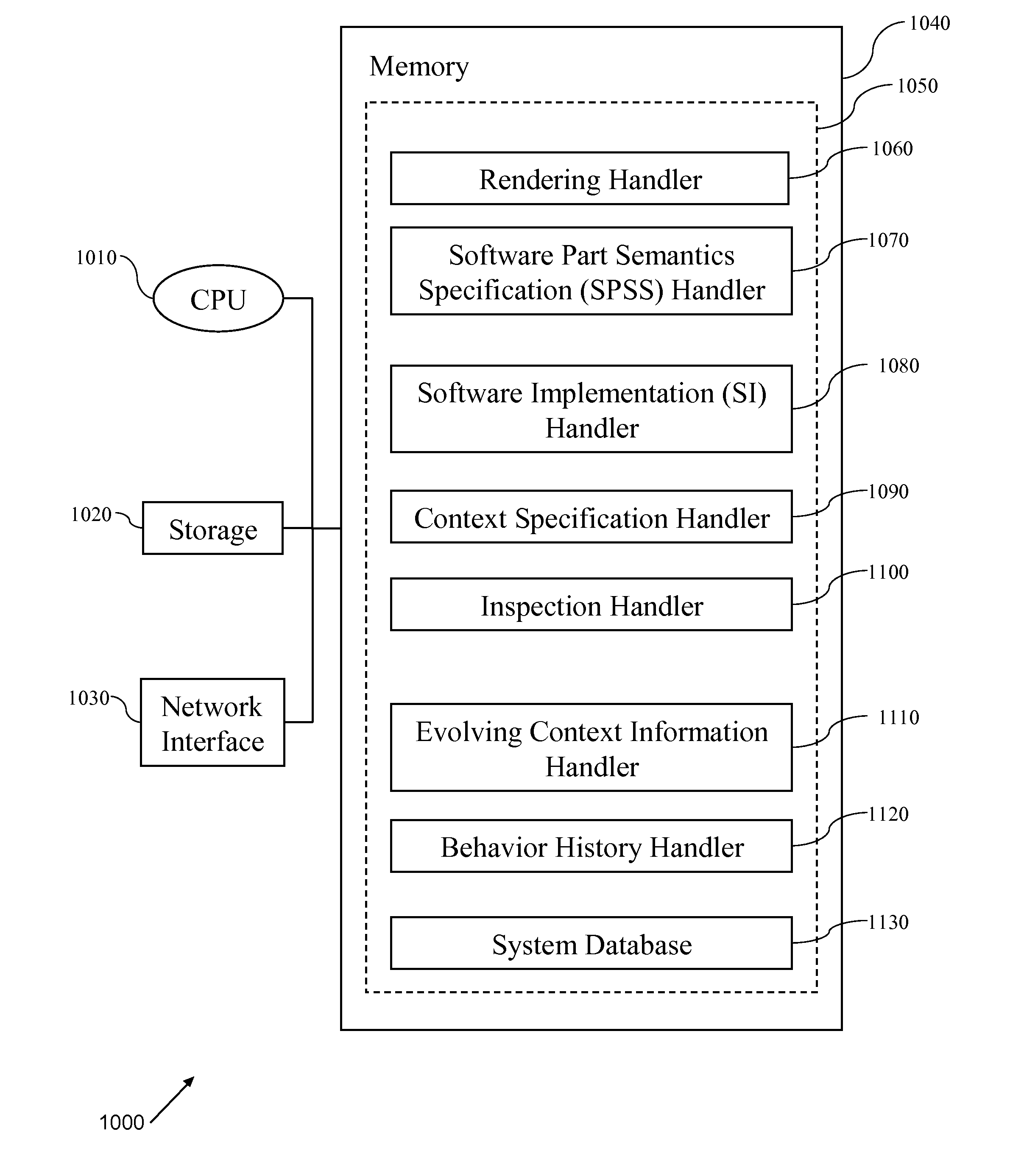Software development, deployment and evolution system, method and program product
a software development and software technology, applied in the field of software development, can solve the problems of increasing affecting the maintenance efficiency of useful software, and unable to extend the particular spl to print to postscript printers, etc., and achieve the effect of reducing the maintenance cost of useful softwar
- Summary
- Abstract
- Description
- Claims
- Application Information
AI Technical Summary
Benefits of technology
Problems solved by technology
Method used
Image
Examples
Embodiment Construction
[0026]Turning now to the drawings and, more particularly, FIG. 1 shows an example of a context-adaptive software evolution system 1000 according to a preferred embodiment of the present invention. Preferably, context-adapted software is created, evolved and deployed in a “data-centric” manner. In particular, developers write data-centric software such that semantics are separated from function analogous to using Cascading Style Sheets (CSS) to separate document content from document presentation in creating Hypertext Markup Language (HTML) based web pages. Thus, developers write semantics-oriented Software Part Semantics Specifications (SPSSs) that describe intended semantics of the software parts without specifying any details about how those semantics are realized. The SPSSs may describe the semantics of pieces of software of any size (small, medium, or large) that are intended, not as a final product, but as components of context-adapted software product or products. Preferably, ...
PUM
 Login to View More
Login to View More Abstract
Description
Claims
Application Information
 Login to View More
Login to View More - R&D
- Intellectual Property
- Life Sciences
- Materials
- Tech Scout
- Unparalleled Data Quality
- Higher Quality Content
- 60% Fewer Hallucinations
Browse by: Latest US Patents, China's latest patents, Technical Efficacy Thesaurus, Application Domain, Technology Topic, Popular Technical Reports.
© 2025 PatSnap. All rights reserved.Legal|Privacy policy|Modern Slavery Act Transparency Statement|Sitemap|About US| Contact US: help@patsnap.com



